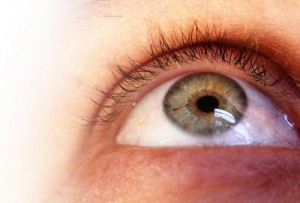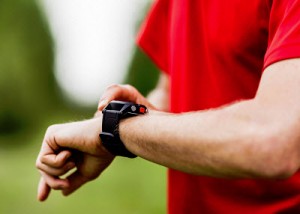A new tech is being developed that would allow people with reduced vision to see using smartphones.
Scientists at the University of Lincoln, in the United Kingdom, are using the funding that they have received through a Google Faculty Research Award to come up with a new type of mobile technology that would allow people who have reduced vision to be able to see using smartphones or tablets.
The goal is to make it easier for these individuals to navigate indoor environments that are unfamiliar.
The Lincoln Center for Autonomous Systems now has a team at work on assistive tech that will be using mobile technology for color and depth sensing through smartphones and tablets, in conjunction with localization and 3D mapping, object recognition, and navigation, to help the visually impaired. The goal is to come up with an interface that will effectively relay information about the surrounding environment to users by way of sounds, vibrations, or spoken words.
This will take a common form of mobile technology and make it into an important assistive device.
 According to the leader of the project, Dr. Nicola Bellotto, “This project will build on our previous research to create an interface that can be used to help people with visual impairments.” Dr. Bellotto is an expert on human-centered robotics and machine perception from the School of Computer Science at Lincoln.
According to the leader of the project, Dr. Nicola Bellotto, “This project will build on our previous research to create an interface that can be used to help people with visual impairments.” Dr. Bellotto is an expert on human-centered robotics and machine perception from the School of Computer Science at Lincoln.
He has pointed out that while there are many different types of visual aids currently available – from wearable sensors and cameras to guide dogs – each of them come with their own range of usability and acceptability drawbacks. That said, he added that “If people were able to use technology embedded in devices such as smartphones, it would not require them to wear extra equipment which could make them feel self-conscious.”
There are already certain mobile apps that exist that are meant to help users to be able to recognize the layout of a place or to identify an object, but the team at Lincoln is hoping to create something that reaches far beyond the current products. They want to use mobile technology that is specifically relevant to the visually impaired user.
While these wearables are highly popular, some evidence is showing that they may not be fully accurate.
In the wearable technology category, no other device is selling as quickly as fitness trackers, which is great news for companies such as Fitbit, which recently took its first steps onto the stock market.
However, experts are saying that people should be careful what information they trust from these wearables.
While experts do agree that wearable technology devices can be extremely helpful in encouraging people to set fitness and health goals, what isn’t yet known is whether or not those gadgets are actually helping users to be able to reach those goals so that they will be able to give themselves an advantage at gaining a healthier body. The advantage to these devices appears to be primarily in encouraging people to create goals and to obtain reminders to stick to those goals. Those features definitely works and a growing number of studies have shown that this is providing people with a measurable advantage.
Evidence that this wearable technology provides reliable feedback in other areas is very limited.
 At the moment, research that has been conducted on the devices to show that they actually work in terms of the feedback that they provide (such as counting steps, calories burned, distance traveled, etc) is very limited. It has been conducted on small numbers or on specific groups of people, so far. There isn’t yet any reliable data with regards to use by the general population.
At the moment, research that has been conducted on the devices to show that they actually work in terms of the feedback that they provide (such as counting steps, calories burned, distance traveled, etc) is very limited. It has been conducted on small numbers or on specific groups of people, so far. There isn’t yet any reliable data with regards to use by the general population.
Fitness trackers are being seen virtually everywhere and come in many forms, such as being attached to clothing, worn on wrists, or fixed to shoes. While they are gathering a large amount of data, what isn’t known is how reliable that data is, or how that data is being used by the wearers.
What isn’t yet known is whether the steps counted, calories burned, heart rate, blood oxygen levels, and sleep quality data are accurate enough to be appropriate to guide the decisions of the wearers. The other factor is that it is not yet known if – regardless of the accuracy of the data – users are actually applying that data to improve their health and performance, particularly over the long term.
 According to the leader of the project, Dr. Nicola Bellotto, “This project will build on our previous research to create an interface that can be used to help people with visual impairments.” Dr. Bellotto is an expert on human-centered robotics and machine perception from the School of Computer Science at Lincoln.
According to the leader of the project, Dr. Nicola Bellotto, “This project will build on our previous research to create an interface that can be used to help people with visual impairments.” Dr. Bellotto is an expert on human-centered robotics and machine perception from the School of Computer Science at Lincoln.
 At the moment, research that has been conducted on the devices to show that they actually work in terms of the feedback that they provide (such as counting steps, calories burned, distance traveled, etc) is very limited. It has been conducted on small numbers or on specific groups of people, so far. There isn’t yet any reliable data with regards to use by the general population.
At the moment, research that has been conducted on the devices to show that they actually work in terms of the feedback that they provide (such as counting steps, calories burned, distance traveled, etc) is very limited. It has been conducted on small numbers or on specific groups of people, so far. There isn’t yet any reliable data with regards to use by the general population.